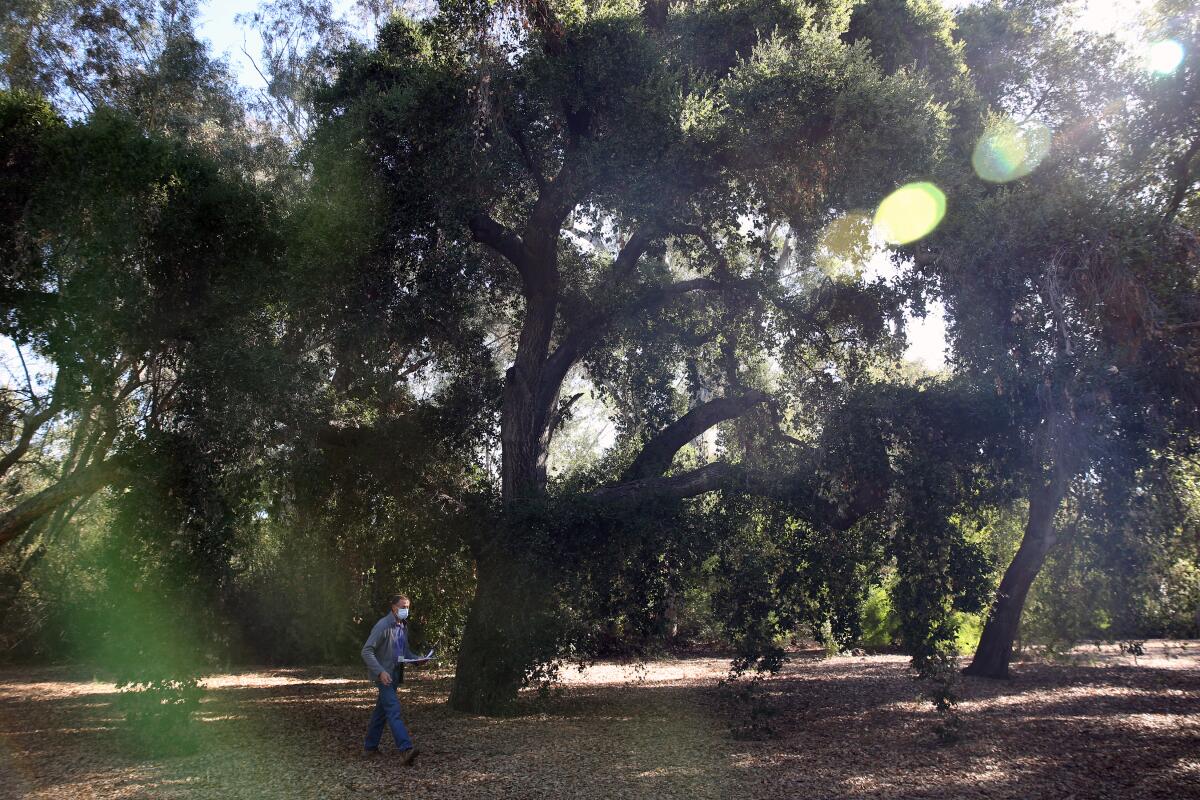Opinion: Your nose isn’t the only one suffering. This L.A. allergy season is epic

- Share via
“I promise it’s not COVID — it’s allergies.”
That’s something you might hear from the legions of Angelenos sneezing our way through what feels like the most intense spring allergy season in memory. It appears we owe it to our wet winter: Nearly 28 inches of rain have fallen in downtown Los Angeles this season, almost double the annual average.
Yes, we need every drop. But our relationship with water in California is complicated, so we can’t just have nice things like green hills and clean air. We also get mudslides and floods and even fears of wildfires once all this new vegetation dries out.
And the allergies — oh, the allergies.
In fact, the words you’re reading here were written under the influence of Claritin and Sudafed. I’ve suffered from severe hay fever and regular sinus infections since my early teenage years in Southern California. I’ve coughed and scratched my red eyes through record wet years, average ones and droughts.
I can say with confidence that my airways, finely tuned to the seasons here, are having the worst spring of their 41 years. I’ve gathered that I’m not alone.
According to the Centers for Disease Control and Prevention, seasonal allergies affect around 25% of all Americans, so there should be more than 2 million sufferers just in L.A. County.
My colleague Louis Sahagún reported last month that allergists were anticipating an unusually intense season because of plant growth turbocharged by California’s wet winter — more greenery means more pollen.
But the onset of symptoms was jarringly sudden, not like the usual seasonal buildup I knew. It turns out that a big factor is not just having more pollen floating around, but strangely, what the downpours did to the pollen.
Dr. Rita Kachru, chief of allergy and immunology at UCLA, told me that the pounding rain broke “the pollen into really tiny particles that will lodge into airways more easily.” Not only are there more sources of pollen, but the pollen in the air is finer and harder to avoid — hence the hay fever going from zero to unbearable in early April after only a few days of sunshine and dry wind.
Fortunately, seasonal allergies typically aren’t a life sentence, and Kachru said many people who first experienced symptoms in adolescence often see remission in their 40s or 50s. In the meantime, Kachru recommends what she calls “avoidance” measures such as shutting windows and doors when pollen levels spike. Over-the-counter antihistamines or an allergy shot regimen can also provide relief.
Unfortunately, climate change means we can put longer allergy seasons alongside mosquitoes and summer humidity as new features of life in L.A. Warmer temperatures mean earlier plant growth in the spring, giving us what Kachru calls the “perfect milieu for creating and dispersing” respiratory allergens.
For now, I’m mostly staying masked outdoors — those facial coverings that helped protect us from COVID-19 also can filter pollen from the air we breathe. Replacing my long-dying lawn could also help, as grass pollen is a common allergy aggravator. Flowering plants and trees are generally better, as they tend to produce larger pollen spores less easily held aloft by air. Plus, they help the struggling bee population.
But we allergy sufferers can’t really do much about the broader landscape. Everyone loves the native coast live oak, but the flood of pollen from that tree can cause as much misery as the grasses going gangbusters from all the rain. The nonnative but beloved olive, eucalyptus and maple trees are major aggravators this time of year too, and allergy forecasts for next week predict very high levels of tree pollen around L.A.
Adjusting to longer allergy seasons isn’t exactly a case of “adapt or die,” as other climate-driven modifications might be. Compared with bigger, more destructive wildfires and intensifying droughts, a longer hay fever season seems almost trivial.
But with the itchy eyes, runny nose and the urgent need to stop everything and sneeze right now, it sure doesn’t feel trivial. Just take my word for it: My affliction really isn’t COVID, it’s allergies.
More to Read
A cure for the common opinion
Get thought-provoking perspectives with our weekly newsletter.
You may occasionally receive promotional content from the Los Angeles Times.











